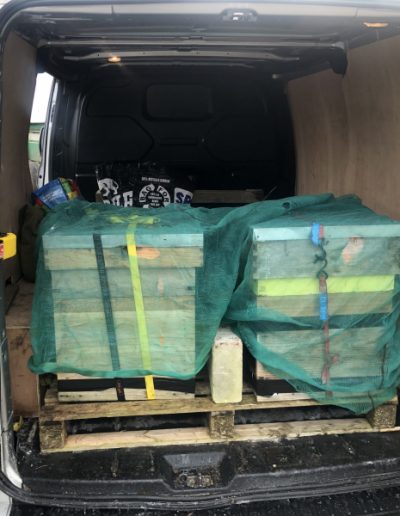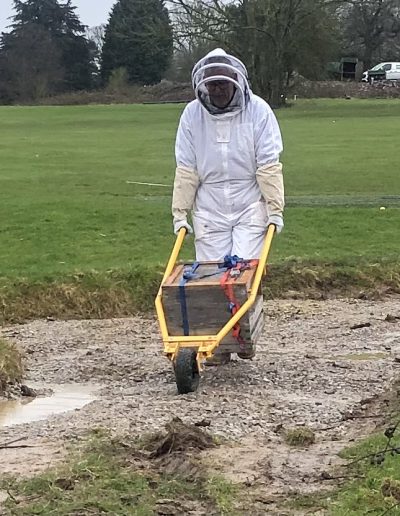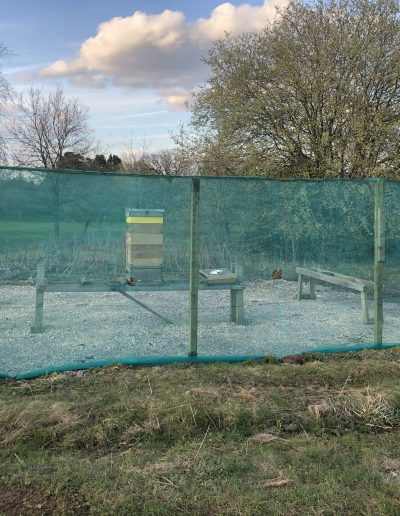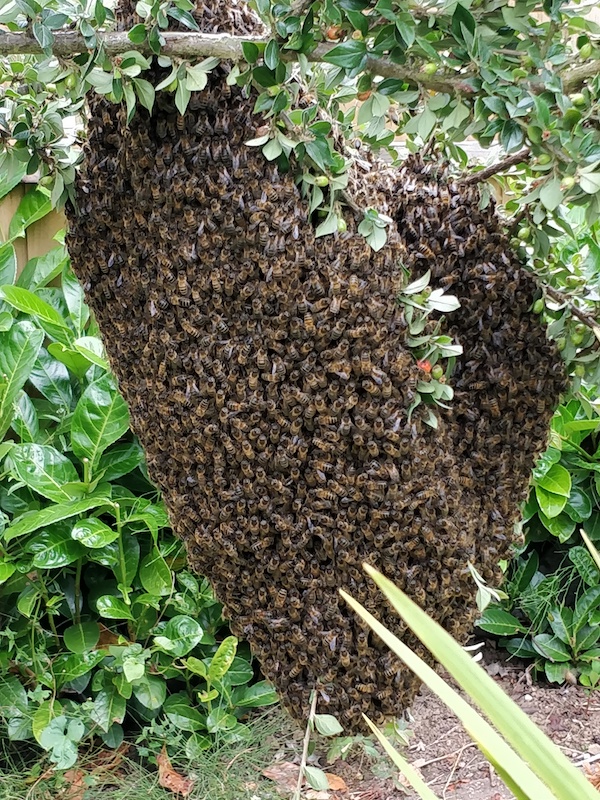How do you move a honeybee colony?
Well with great care is the obvious response! Moving boxes each containing 10-15,000 stingy insects is a bit scary but if you plan ahead, and follow a few rules, it’s quite straight forward.
- Move them a very little, so 3 feet or 3 miles away. Anything in between means they go back to the original hive location and get very confused.
- Block the entrance with a bit of foam when the last foragers come home in the evening. Or get up very early before they start to fly so you don’t leave any bees behind.
- Move them in winter/spring – it’s easier as the boxes aren’t so heavy with honey. Use good straps. That’s essential to keep the hive parts together – you don’t want bees escaping!
- Ideally secure the hives so they don’t slide around or tip over in your car or van.
- Where possible face the hive boxes with the frames in the direction of travel so they don’t rattle so much.
- When on the move ensure the bees have lots of ventilation so they don’t overheat. I’ve raised the boxes on a pallet.
- If you have to carry the hives a fair distance borrow a hive barrow – it’s a brilliant bit of kit.
- Most importantly enlist the help of a friend or two.
This week we moved four of our honeybee colonies to a new home at a local golf course. The photo shows the beautiful new apiary site. There are lots of mature trees and shrubs nearby so I’m hoping they will thrive there and produce some totally tasty honey.
Luckily the move went smoothly and neither the bees or the beekeepers were harmed in the move 😊.




